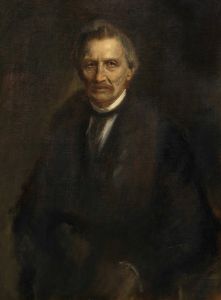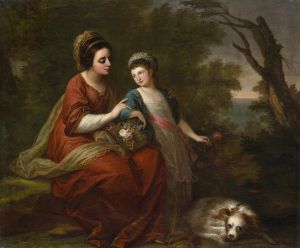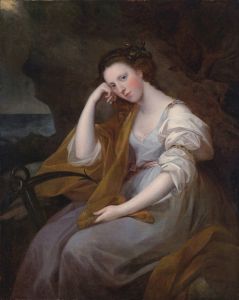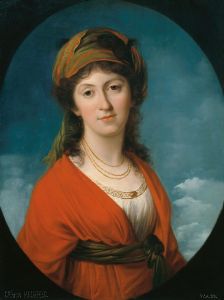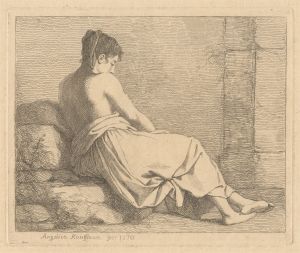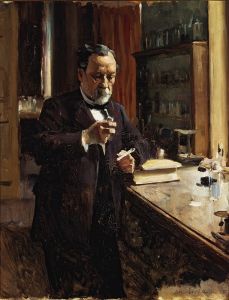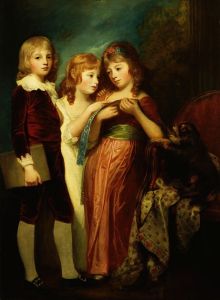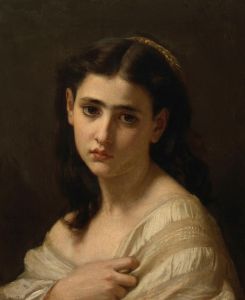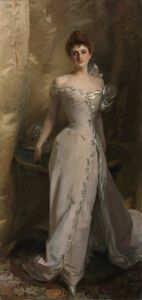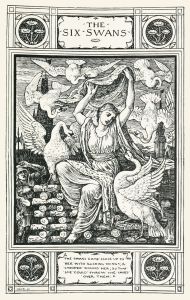
Group portrait of Lady Elizabeth Smith-Stanley, Countess of Derby, with her infant son Edward, later 13th Earl of Derby, and her half-sister, Lady Augusta Campbell
A hand-painted replica of Angelica Kauffmann’s masterpiece Group portrait of Lady Elizabeth Smith-Stanley, Countess of Derby, with her infant son Edward, later 13th Earl of Derby, and her half-sister, Lady Augusta Campbell, meticulously crafted by professional artists to capture the true essence of the original. Each piece is created with museum-quality canvas and rare mineral pigments, carefully painted by experienced artists with delicate brushstrokes and rich, layered colors to perfectly recreate the texture of the original artwork. Unlike machine-printed reproductions, this hand-painted version brings the painting to life, infused with the artist’s emotions and skill in every stroke. Whether for personal collection or home decoration, it instantly elevates the artistic atmosphere of any space.
Angelica Kauffmann's painting Group portrait of Lady Elizabeth Smith-Stanley, Countess of Derby, with her infant son Edward, later 13th Earl of Derby, and her half-sister, Lady Augusta Campbell is a notable work by the Swiss-born Neoclassical artist. Kauffmann, one of the most prominent female painters of the 18th century, was renowned for her portraits and historical compositions. This group portrait exemplifies her skill in capturing both the likeness and the social status of her sitters, as well as her ability to convey familial relationships and emotional warmth.
The painting features Lady Elizabeth Smith-Stanley, Countess of Derby (1753–1797), a member of the British aristocracy, alongside her infant son Edward Smith-Stanley, who would later become the 13th Earl of Derby (1775–1851). Lady Elizabeth was the daughter of James Smith-Stanley, Lord Strange, and Lucy Smith-Stanley, and she married Edward Smith-Stanley, the 12th Earl of Derby, in 1774. Her son Edward, depicted as an infant in the painting, would go on to have a distinguished political career, serving as Chancellor of the Duchy of Lancaster and holding other prominent positions.
Also included in the portrait is Lady Augusta Campbell (1760–1831), Lady Elizabeth's half-sister. Lady Augusta was the daughter of John Campbell, 5th Duke of Argyll, and his second wife, Jeanne Warburton. The inclusion of Lady Augusta in the portrait emphasizes the close familial bond between the two women, despite their different parentage.
The composition of the painting reflects Kauffmann's characteristic style, which combines elements of Neoclassicism with a sensitivity to the personal and emotional dynamics of her subjects. The figures are arranged in a harmonious grouping, with Lady Elizabeth holding her infant son, symbolizing maternal care and continuity of lineage. Lady Augusta is positioned nearby, her presence reinforcing the theme of familial connection. The setting and attire of the figures further underscore their aristocratic status, with elegant clothing and a refined backdrop typical of Kauffmann's portraiture.
This painting is an example of Kauffmann's ability to navigate the social and artistic expectations of her time, producing works that appealed to the tastes of the European elite. It also highlights her role as a pioneering female artist in a male-dominated field, gaining recognition and patronage from prominent figures of the 18th century.
The current location of the painting is not specified in available records, and further details about its provenance or commission are not documented.





